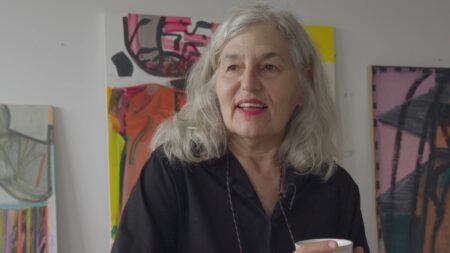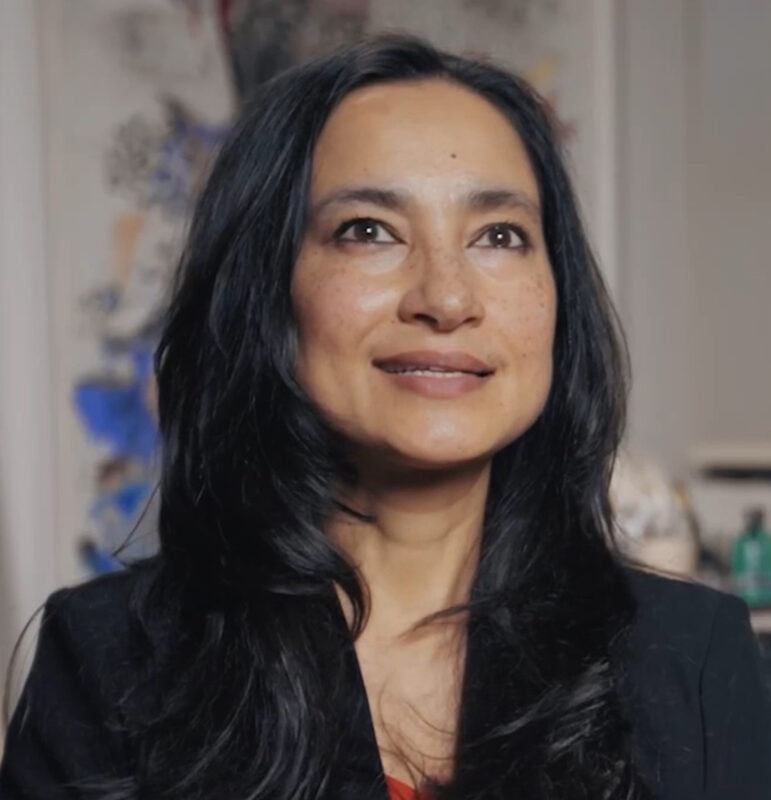Continue playing
(Time remaining: )
Play from beginning
Continue playing "{{ controller.videos[controller.getVideo(controller.currentVideo)].segmentParentTitle}}"
{{controller.videos[controller.getVideo(controller.currentVideo)].title}} has ended.
Hito Steyerl and Shahzia Sikander at the 13th Istanbul Biennial
Hito Steyerl explains her film, Is a Museum a Battlefield?, to Shahzia Sikander at the 13th Istanbul Biennial. The images of bullets are meant to call attention to the invisible networks that fund of the art world, specifically the Turkish arms manufacturers that have sponsored past Biennials.
“Once money enters an art space it links to other social fields,” says Steyerl, “so this tries to follow these links between this battlefield—which happens to be in the southeast of Turkey—and this specific art space.”
More informationClosed captionsAvailable in English, German, Romanian, Italian, Japanese, Korean, Chinese, Italian
Through the Art21 Translation Project, multilingual audiences from around the globe can contribute translations, making Art21 films more accessible worldwide.
Interested in showing this film in an exhibition or public screening? To license this video please visit Licensing & Reproduction.
Hito Steyerl was born in 1966 in Munich and now lives and works in Berlin. A filmmaker, philosopher, and cultural critic, Steyerl roots her investigative practice in the proliferation of digital images and the large-scale implications of such circumstances. Steyerl’s work takes the form of essays, lectures, installations, video, and photography.
Shahzia Sikander specializes in Indian and Persian manuscript painting, a traditional, technique-driven style that Sikander imbued with a personal context and history, blending the Eastern focus on precision and methodology with a Western emphasis on creative, subjective expression. In doing so, Sikander transported manuscript painting into the realm of contemporary art. Expanding the manuscript painting to the wall, Sikander also creates murals and installations, using tissue-paper-like materials that allow for a more free-flowing style. Utilizing performance and various media and formats to investigate issues of border crossing, she seeks to subvert stereotypes of the East and, in particular, the Eastern Pakistani woman.


